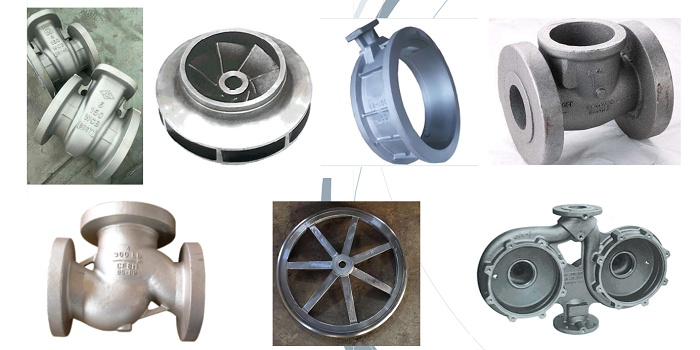Ductile iron casting offers a sustainable advantage in eco-friendly manufacturing practices, making it an excellent choice for industries striving to reduce their environmental impact. With its unique properties and production processes, ductile iron casting promotes sustainability throughout the manufacturing lifecycle. This article explores the sustainable advantages of ductile iron casting and its contribution to eco-friendly manufacturing.

- Recyclability: Ductile iron is highly recyclable, which aligns with the principles of circular economy and resource conservation. Scrap ductile iron can be efficiently recycled and reintroduced into the production process, reducing the reliance on virgin raw materials. By incorporating recycled ductile iron, manufacturers can significantly reduce energy consumption, greenhouse gas emissions, and waste generation associated with the extraction and processing of new materials.
- Energy Efficiency: Ductile iron casting offers energy-efficient manufacturing processes. The melting and pouring of ductile iron require less energy compared to other metal casting methods, thanks to its lower melting temperature and shorter solidification time. This energy efficiency translates into reduced carbon emissions and lower energy costs, contributing to overall environmental sustainability.
- Design Optimization: Ductile iron casting allows for design optimization that promotes eco-friendly practices. By utilizing ductile iron’s high strength and ductility, engineers can design components with lighter weight and reduced material consumption without compromising performance and safety. This weight reduction contributes to energy savings during transportation and decreases the carbon footprint associated with raw material extraction and processing.
- Waste Reduction: Ductile iron casting minimizes waste generation throughout the manufacturing process. The ability to create complex shapes and consolidate multiple components into a single casting reduces the need for additional machining, assembly, and joining processes. This reduction in secondary operations decreases material waste, energy consumption, and the use of chemicals, thereby minimizing the environmental impact and optimizing material utilization.
- Longevity and Durability: Ductile iron castings are known for their longevity and durability. They have a high resistance to corrosion, wear, and fatigue, ensuring extended service life and reduced replacement frequency. This durability reduces the need for frequent component replacements, lowering resource consumption and waste generation over time.
- Environmental Compliance: Ductile iron casting processes can comply with stringent environmental regulations. Manufacturers can implement sustainable practices, such as advanced air filtration systems, water treatment processes, and waste management strategies, to minimize emissions and ensure compliance with environmental standards. These practices contribute to maintaining a clean and safe manufacturing environment while minimizing the impact on surrounding ecosystems.
- Eco-Friendly Coatings and Surface Treatments: Ductile iron castings can be coated or treated with eco-friendly surface treatments to enhance their performance and protect against corrosion. Utilizing environmentally friendly coating materials and surface treatments ensures the absence of harmful substances and reduces the impact on human health and the environment.
In conclusion, ductile iron casting offers a sustainable advantage in eco-friendly manufacturing practices. Its recyclability, energy efficiency, design optimization, waste reduction, longevity, and compliance with environmental regulations contribute to a more sustainable manufacturing ecosystem. By embracing ductile iron casting, industries can reduce their environmental footprint, conserve resources, and move towards a greener and more sustainable future.
